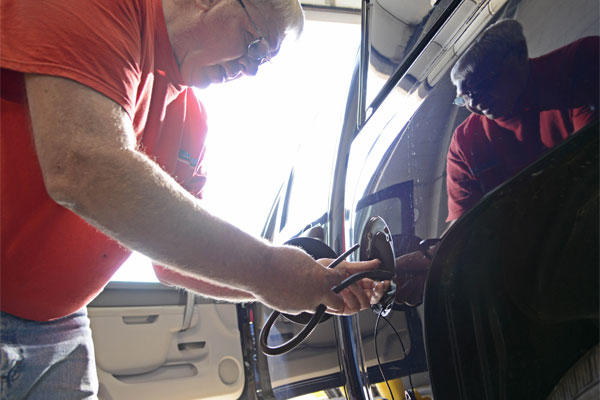JOINT BASE SAN ANTONIO-RANDOLPH, Texas -- All government-owned and general service administration vehicles at Joint Base San Antonio-Randolph, Texas, are scheduled to receive an automotive information module, or AIM2.
AIM2 is a device that collects real-time data that will help fleet managers avoid wasting fuels and stop emissions release.
GOVs and GSA vehicles at Lackland and Fort Sam Houston are slated to have the systems installed later this calendar year.
The devices will add to an Air Force-wide savings of $8.6 million, said Master Sgt. Alejandro Correa, Air Force vehicle energy fleet manager. AIM2 also eliminates the need for vehicle identification link keys, which are used to track how much fuel a vehicle takes in during every refueling session.
The removal of VIL keys from the refueling process and the addition of systems that track how much fuel is used by each vehicle will lead to a more accurate reading of fuel consumption per vehicle, Billy Hampton, 902nd Logistics Readiness Squadron vehicle management flight chief, said.
"Radio frequency components connected to the AIM2 provides vehicle data and error codes, straight from the vehicle's electronic control module to the fuel management unit at the military gas station," Hampton said.
AIM2 interfaces directly with a vehicle's on-board diagnostics computer, so the vehicle management and analysis team can print out instant reports with diagnostic codes for more efficient car repairs.
The modules, wires connected to a gas cap ring and circuit board, are used at Joint Base Charleston, S.C.; Joint Base McGuire-Dix-Lakehurst, N.J.; and Eglin AFB, Fla., as part of the Air Force's transition to becoming cost-conscious with resources, said Jim Muir, one of the contractors hired to install the new devices in the 396 GOVs and GSA vehicles.
The contractors will remain on the base until December, but will provide AIM2 training to vehicle maintenance members for future installation in new vehicles.
"The new technology is all about preventive maintenance, but it also helps keep us personally accountable when using Air Force resources," Hampton said.
AIM2 is part of a military effort to reduce fuel consumption via Presidential Executive Order 13423, and will trim the 1.5 million manpower hours across all functional areas in the Air Force currently used to track and record vehicle odometer readings.
The Air Force will install 30,000 units across the country and will bring the technology to three bases in Europe in summer 2013, Darren Silsbee, FuelMaster AIM2 program manager, said.




























